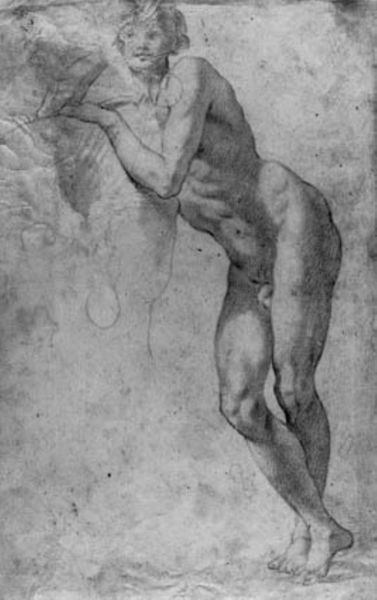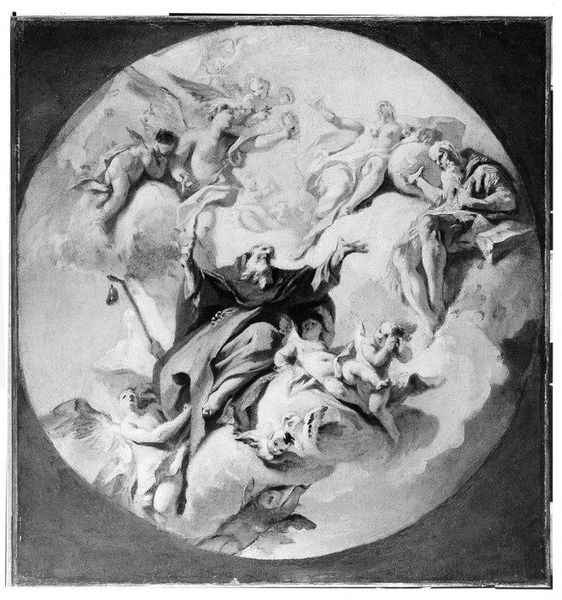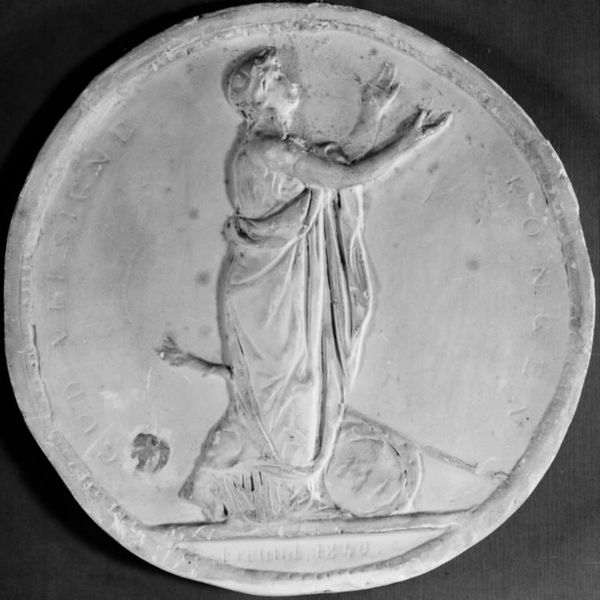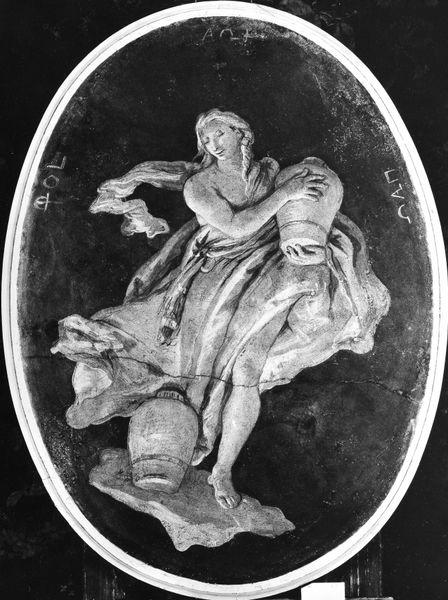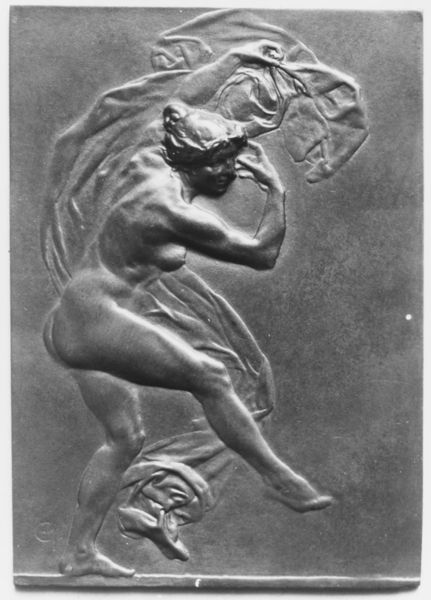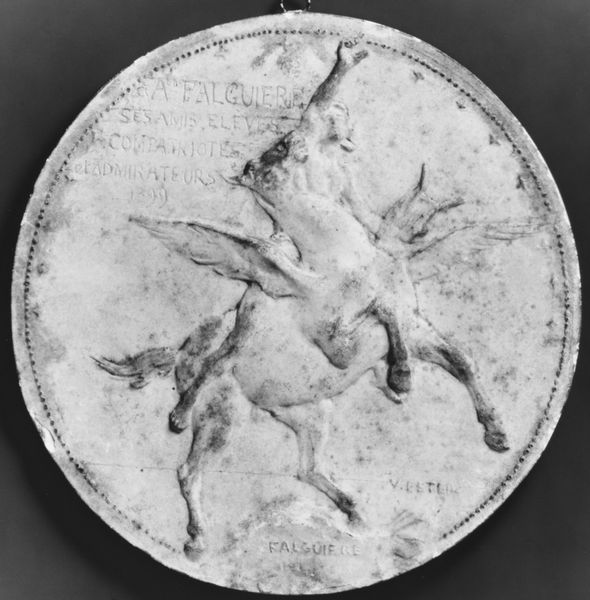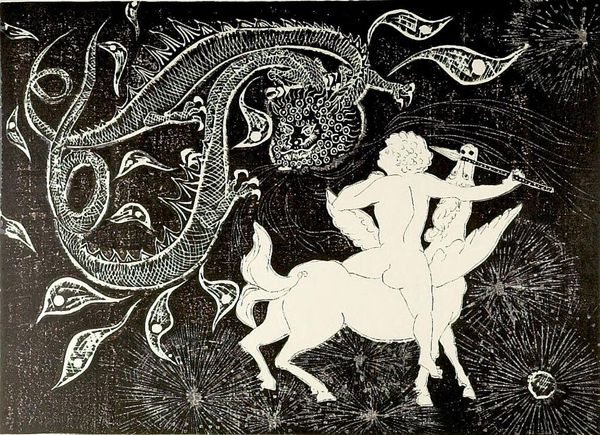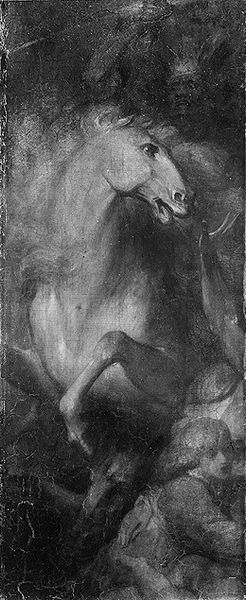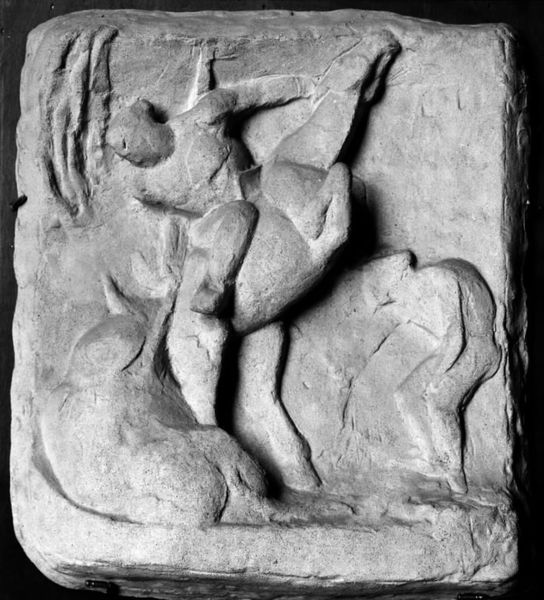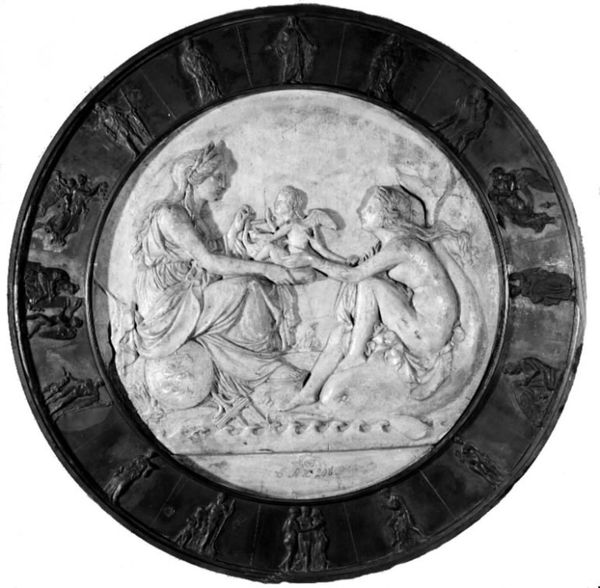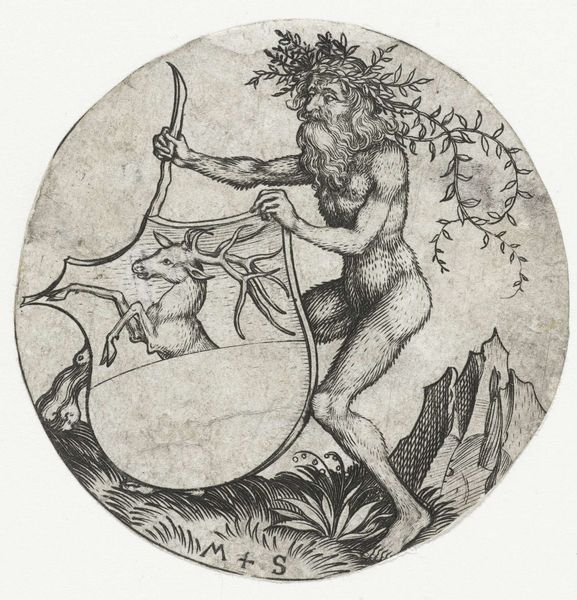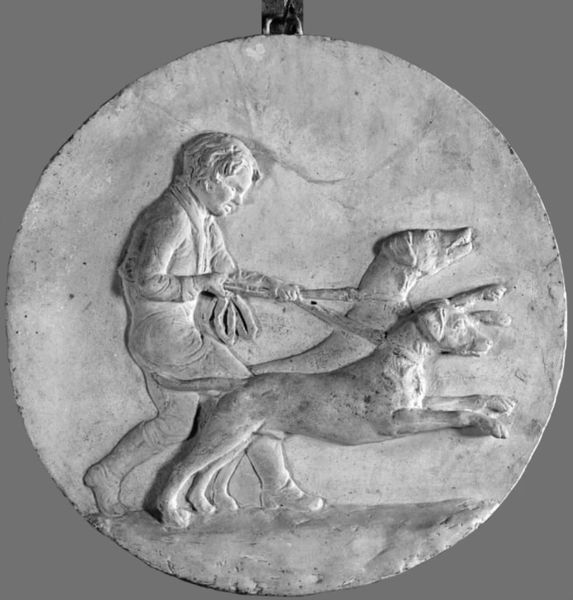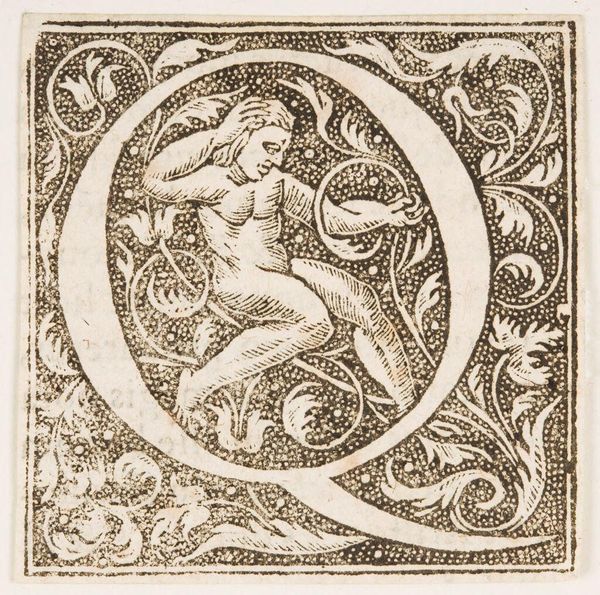
Frescoes from the Villa Stati-Mattei 1501 - 1536
0:00
0:00
fresco
#
allegory
#
charcoal drawing
#
figuration
#
fresco
#
charcoal art
#
cupid
#
history-painting
#
academic-art
#
charcoal
#
italian-renaissance
Dimensions: (1-12) each 12 7/8 x 12 7/8 in. (32.7 x 32.7 cm); (13-14) each 13 7/8 x 26 7/8 in. (35.2 x 68.3 cm); (15-22) each 35 1/8 x 20 1/2 in. (89.2 x 52.1 cm)
Copyright: Public Domain
These frescoes were painted by Baldassare Peruzzi, an architect and painter working in Italy in the early 16th century. Originally decorating the Villa Stati-Mattei in Rome, they now reside here at the Metropolitan Museum. Peruzzi lived at a time when artists and intellectuals looked back to ancient Greece and Rome for inspiration. The image of a centaur – a creature with the upper body of a man and the lower body of a horse – is taken directly from classical mythology. This interest in classical antiquity was often linked to the aspirations of the wealthy elite, for whom these mythological references served as symbols of learning and refinement. They were visual symbols of a cultivated life. As art historians, understanding this image requires us to delve into the visual culture of Renaissance Italy. By researching the classical sources that inspired Peruzzi, and by understanding the social function of villas like the Stati-Mattei, we can better appreciate the rich and complex meanings embedded in this artwork.
Comments
No comments
Be the first to comment and join the conversation on the ultimate creative platform.
